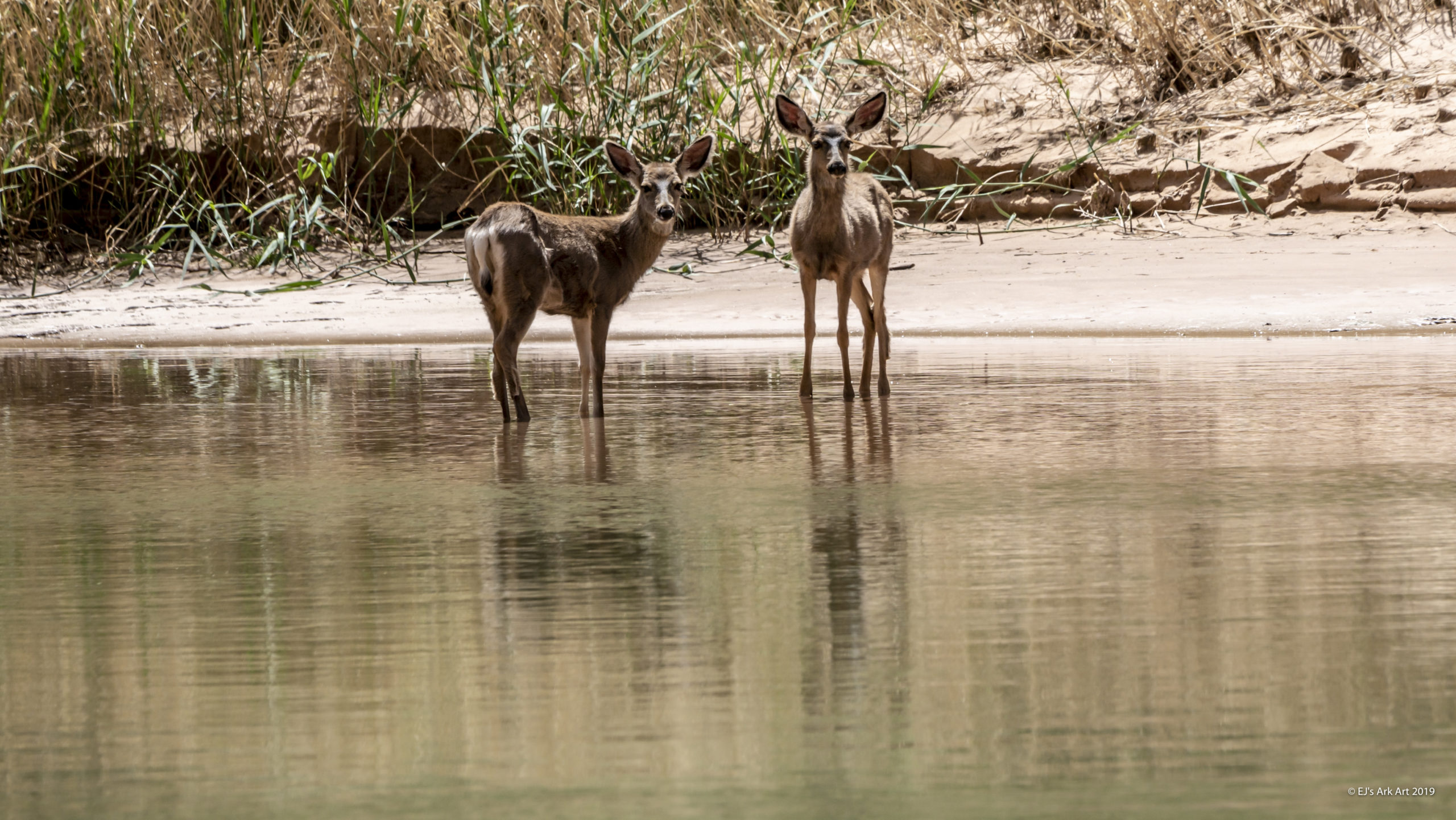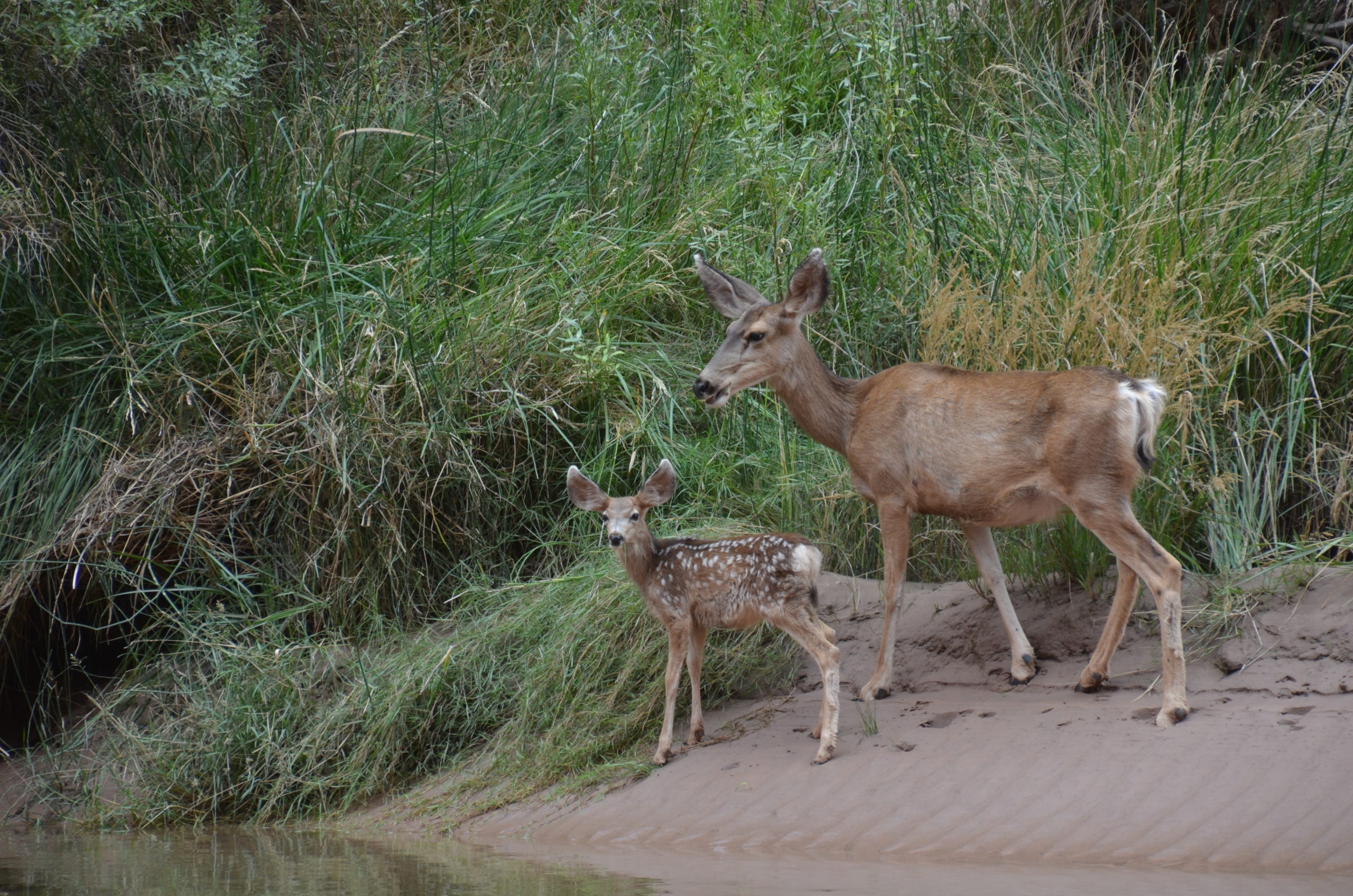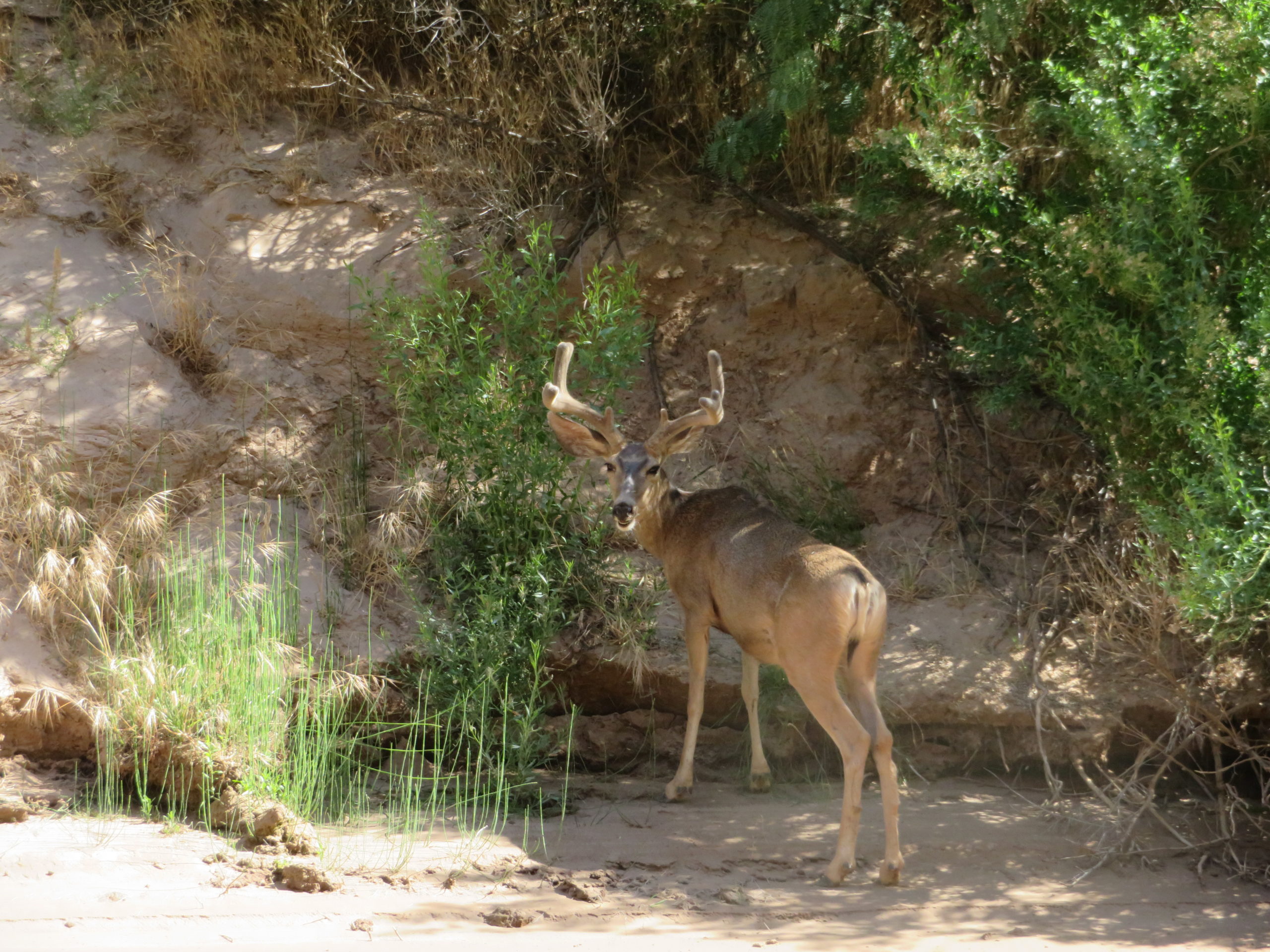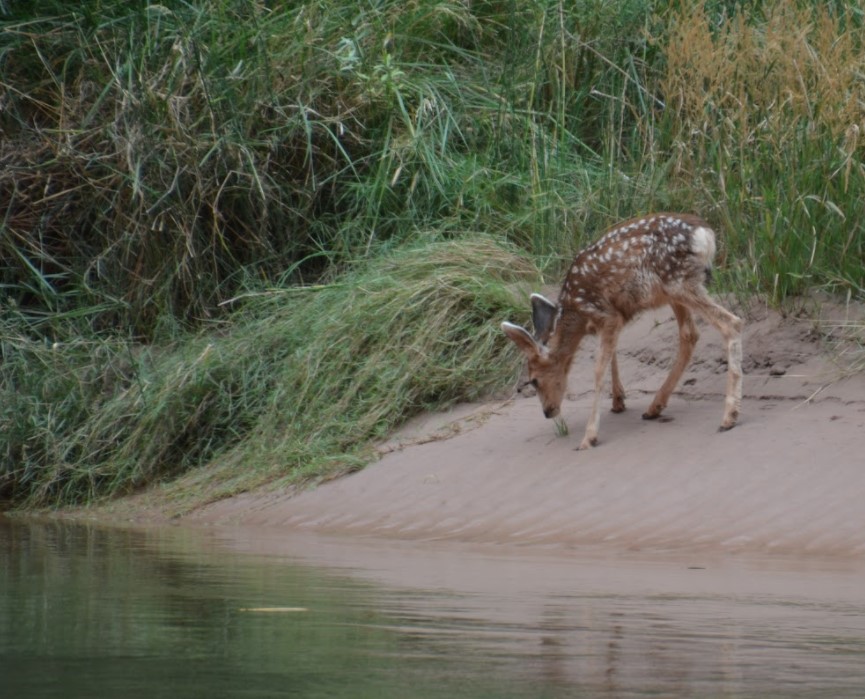The GCE Animal Series Presents
The Mule Deer
Odocoileus Hemionus

Mule Deer / EJ’s Ark Art
When you are on the river, you will most likely see many animals on your trip. It might be a Bighorn Sheep taking the time to relax and drink from the river, or a Great Blue Heron nesting or taking flight across the water. Another animal you may have a chance to see is the Mule Deer.
The Mule Deer population in Grand Canyon National Park is about 80,000 to 100,000 deer strong. So the chances of seeing one are quite high! In the Spring, you even have a chance to see a spotted fawn (a baby mule deer). In this blog, we are going to talk about Identification, Behavior and Diet, and the Reproduction of Mule Deer.
Identification
- Large, mule-like ears
- Brown to grey color (depending on the season)
- White tail with a black tip
- Max weight is about 200 pounds
- Stands 31-42″ tall
- Fawns (baby Mule Deer) are spotted

Momma and Fawn / Betsy S
Behavior and Diet
- Bucks grow antlers each year which shed in the spring. For the first little while, these antlers have a fuzz on them called “Velvet.” The deer end up rubbing the velvet off on trees before they shed their antlers again.
- Mule Deer are herbivores. Their diets include plants, shrubs, grasses, nuts, and berries.
- Their ears radiate heat from the body.
- They are most active early in the morning and at night. They generally sleep during the day.

Buck in Velvet / Matt S
Reproduction
- They give birth in late spring/early summer
- They have a gestation of 190 days
- A Doe will usually give birth to twins!

Fawn / Betsy S
We hope to have you on the river, where you can see some Mule Deer and the other amazing fauna of the Grand Canyon. For more information, you can visit the National Park Website Learn About Mammals
Be sure to check out some of our other Animal Series blogs here

